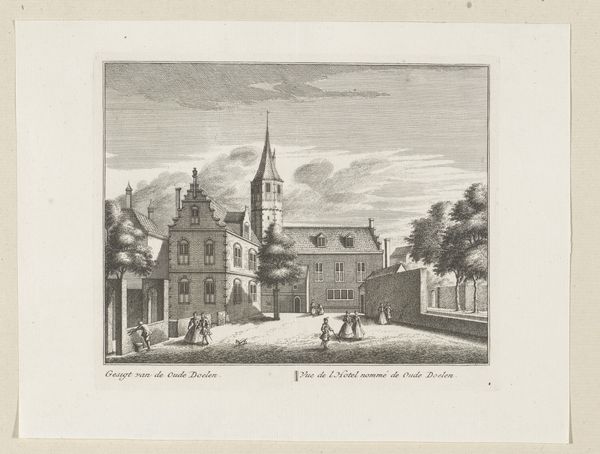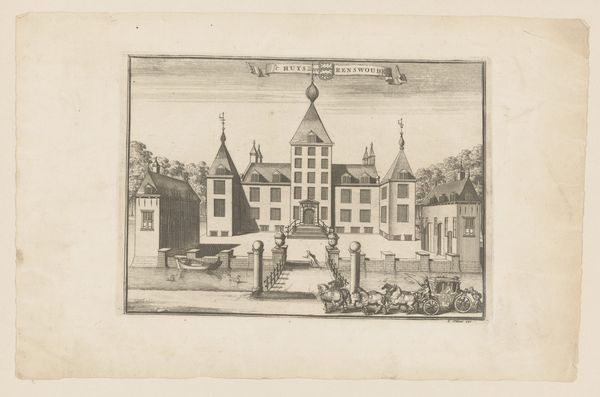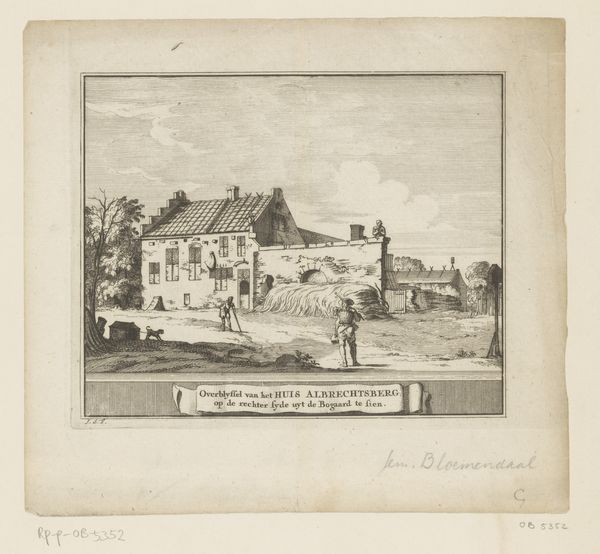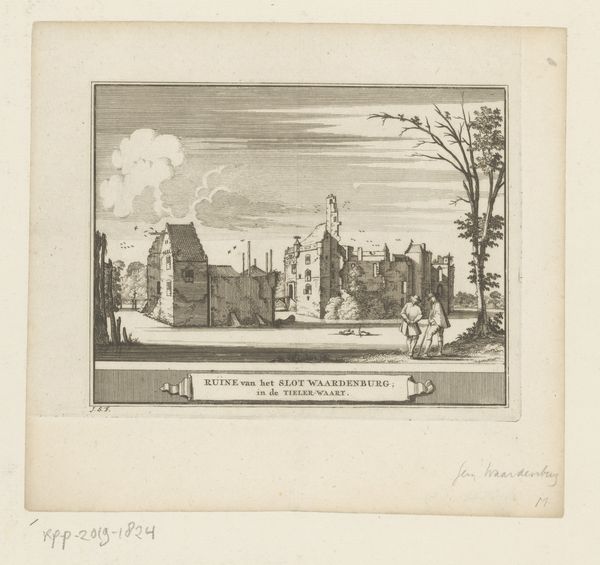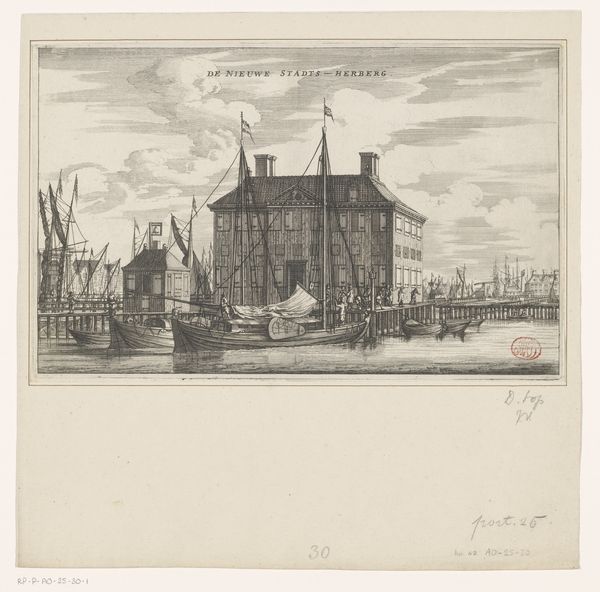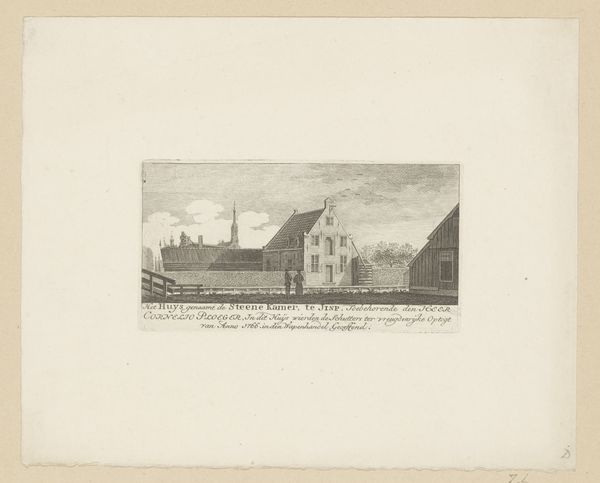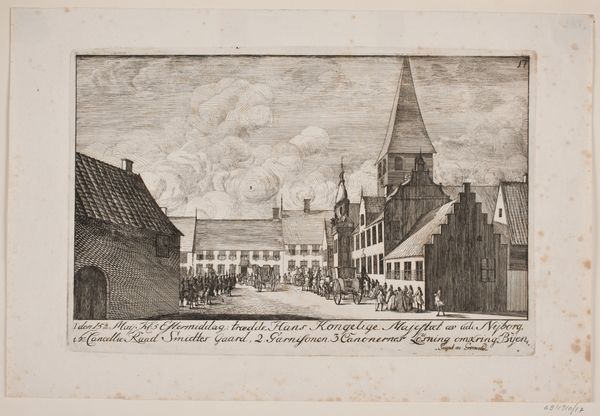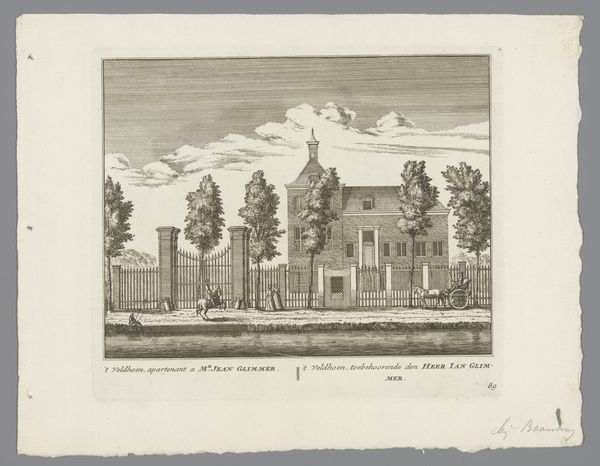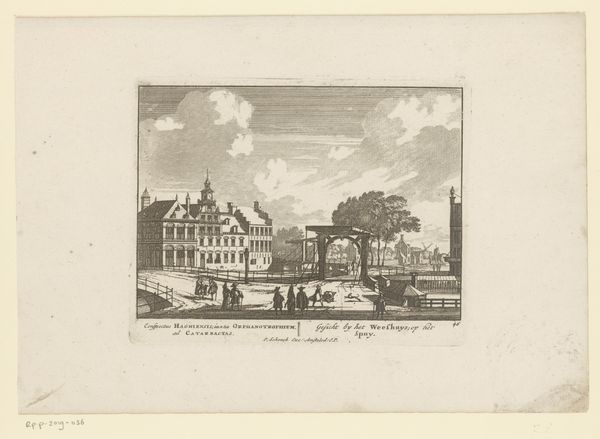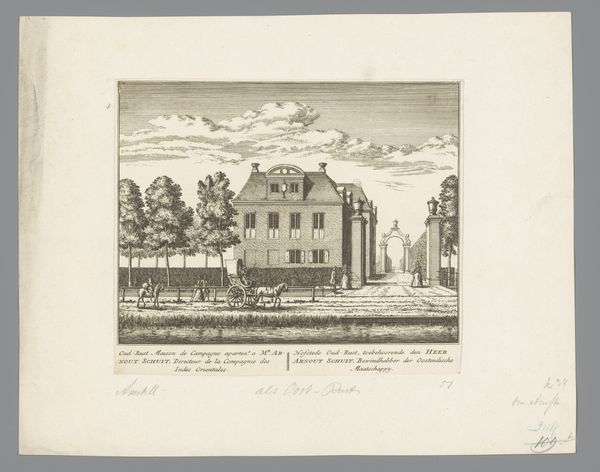
print, engraving, architecture
#
dutch-golden-age
# print
#
landscape
#
cityscape
#
engraving
#
architecture
Dimensions: height 195 mm, width 217 mm
Copyright: Rijks Museum: Open Domain
Editor: Here we have Jacobus Schijnvoet's "View of Heemstede Castle," created in 1711. It's a detailed print of the castle and its surrounding water. It looks quite peaceful, almost like a stage set with everything carefully placed. What symbols jump out to you? Curator: Immediately, I notice the pronounced verticality, almost an aspiration towards the heavens. Consider the towers: these aren't simply architectural features; they evoke power, permanence. What kind of power and whose permanence might these suggest? Editor: Nobility? Perhaps landowners wanting to show off their status? Curator: Precisely. Land was intrinsically tied to legacy, and the castle acted as a visual assertion of that. Also, note how water nearly encircles the edifice. Water’s symbolic meaning is quite varied. Here, does it function as a boundary, a protective barrier? Or is there a reflection occurring – visually and metaphorically? Editor: I think both; defense but also a mirrored image, like the family wants to see itself reflected in this idealized state. The swans on the water, too. Curator: Swans frequently represent grace, purity, even love and fidelity. Placement isn’t accidental; it supports your reading. Do these symbols resonate with the societal values of the Dutch Golden Age, or perhaps challenge them? Editor: The focus on order and control certainly reflects the values. But it’s interesting to think about the undercurrents that might be present but harder for us to see today. Curator: Yes. And by decoding those visual elements, we come to a more complete appreciation, realizing, hopefully, how even seemingly straightforward depictions carry a rich layer of coded messaging. Editor: Absolutely, and considering how we’re conditioned to 'read' similar imagery now versus then adds another dimension of meaning entirely. Thanks for unpacking this!
Comments
No comments
Be the first to comment and join the conversation on the ultimate creative platform.


